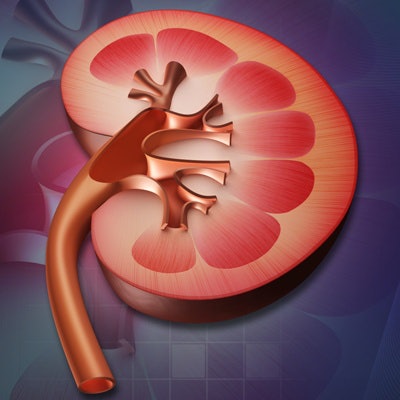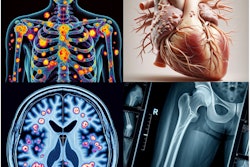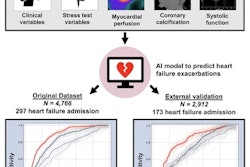
An AI model based on SPECT images has the potential to help nuclear medicine physicians identify kidney defects in children, according to a research group in Taiwan.
A team led by C. Lin, MD, PhD, of Chang Gung University in Taoyuan, developed a deep-learning (DL) model that can differentiate between normal and scarred kidneys using technetium-99m (Tc-99m) dimercaptosuccinic acid (DMSA) SPECT scans. In a test, the model achieved almost perfect agreement with reads by two experienced experts, they found.
"These preliminary results suggest that DL may be used as a computer-aided diagnosis system that assists less-experienced nuclear medicine physicians in the diagnosis of renal cortical defects," the group wrote, in an article published in the August issue of Clinical Radiology.
Tc-99m DMSA-SPECT is widely used in pediatric patients to evaluate renal scars, acute pyelonephritis, and renal cortical fibrosis, yet studies have found that clinician agreement is not very high (around 73%) when interpreting this imaging, the authors noted.
Thus, they suggested an AI model that can differentiate between normal and abnormal kidneys in these patients "may be of clinical interest," they wrote.
The group included 301 Tc-99m DMSA-SPECT exams and split them randomly into sets of 261, 20, and 20 for training, validation, and testing. The researchers trained three DL models using either 3D SPECT images, 2D maximum intensity projections (MIPs), or 2.5D MIPs, depending on how the gamma cameras captured angles around the body.
Each model was trained to classify the SPECT images as normal or abnormal, with a consensus reading by two nuclear medicine physicians serving as the reference standard.
According to the results, the DL model trained on 2.5D SPECT images exhibited better differentiation performance than the other models. The model achieved 92.5% accuracy, 90% sensitivity, and 95% specificity in differentiating between normal and abnormal kidneys.
Moreover, further analysis revealed a kappa coefficient of 0.85 obtained from the 2.5D model, indicating that it provided an almost perfect agreement with the visual reading results of the two experienced physicians, the authors wrote.
"The experimental results suggest that DL has the potential to differentiate normal from abnormal kidneys in children using Tc-99m DMSA-SPECT imaging," the authors stated.
Despite the promising result, the study was limited by a small number of patient images, the authors wrote, and they suggested that such DL models ultimately should also apply to adults, including renal transplant donor candidates. Additional work is warranted, they wrote.
"This is the first study using DL with Tc-99m DMSA SPECT images to evaluate differentiating normal from abnormal kidneys," the researchers noted.
The full study is available here.





















